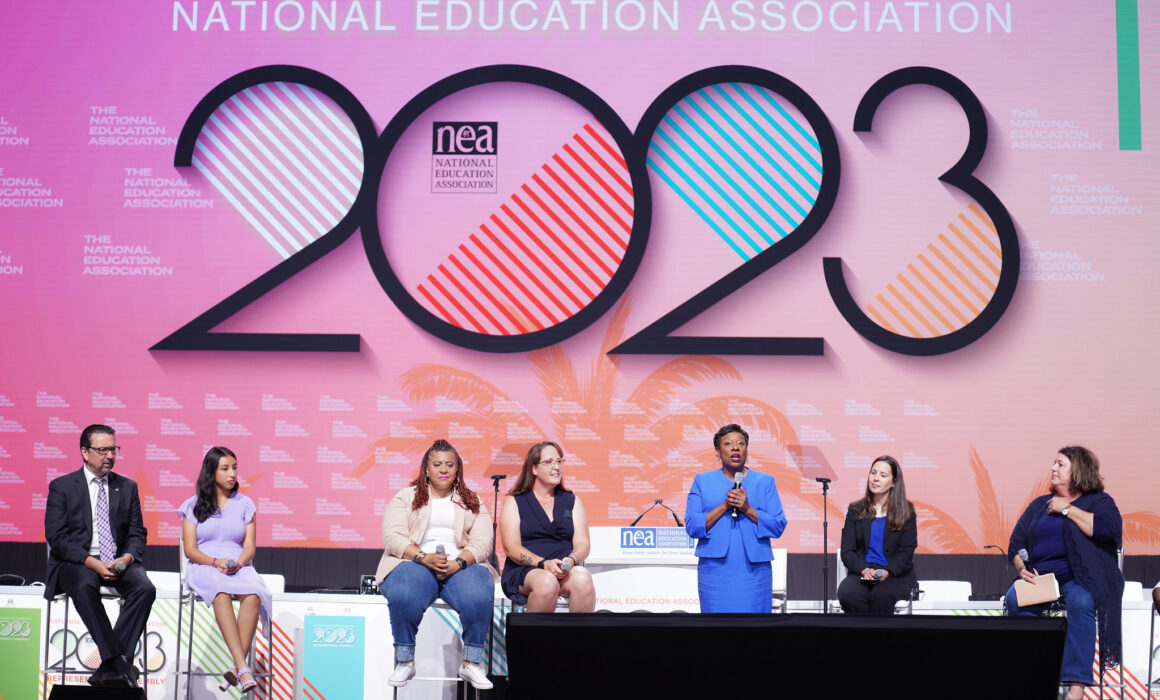
CTA and California were well-represented at an eight-person panel on community schools, held at NEA’s Representative Assembly in July and moderated by NEA President Becky Pringle. In addition to UTLA President Cecily Myart-Cruz and Anaheim Secondary Teachers Association (ASTA) President and CTA/NEA Coordinator Grant Schuster, a recent graduate from Anaheim’s Sycamore Junior High (a community school) also spoke.
The significant Golden State presence reflects California’s nation-leading $4.1 billion investment in community schools as well as CTA chapters’ success in organizing, bargaining for and now implementing community schools in multiple school districts.
“The community schools model — an actual democratic model that includes every stakeholder — is for every school across this nation — urban, rural, suburban and every school in between,” said Myart-Cruz. “It is the absolute antidote to privatization.”
In 2019, following a six-day strike, UTLA reached a deal with LA Unified School District that included funding to convert 30 campuses to community schools. LAUSD now has 55 community schools, with plans to add more.
Student Emma Alvarez, who was on Sycamore Junior High’s community schools site team, spoke of being heard as an equal. “I get a say in what I want in my classroom, what I want to learn. I have the same amount of voice as my principal, my administrator, my parent, my friend and the people in my community.”
Schuster talked about his and ASTA’s experience in working with the school district, parents and students and community allies to open/transition 15 community schools.
“What we’ve learned is that listening is critical in building trust. We engaged with and educated our members and built relationships with community partners. Then we went together to the district and said, ‘we want to implement this model.’ We built a steering committee including teachers, ESPs, parents, students, community groups and our district.
“We set out a five-month path for teacher leads and community school organizers to talk to every teacher, ESP and facility worker at every site, and then followed up with parent and student conversations, and community circles and one-on-one interviews. Before we started, parent participation averaged 15 percent. We made it a goal [to reach] 75 percent — and we got that at every one of the community schools.
“We were able to bring [what we learned] into the classroom. At Sycamore Junior High, for example, immigration [came] out in all the surveys. Parents did not understand what their rights were or what resources were available. Students were anxious about their families’ future, and teachers saw that reflected in the classroom.
“The site team got together to talk about solutions. We now provide services around immigration, so parents can understand what they can do. The 7th grade English teachers got together to create a unit on immigration, so students can study U.S. policy on immigration and deportation to not only relieve their anxiety and express how they feel but to learn about opportunities for civic engagement and to advocate for themselves and their families.
“We are only two years into this process, but we are learning that we must go intentionally slow to build the structures so that in the future we can go much faster. Because we know that progress only travels at the speed of trust.”


The Discussion 0 comments Post a Comment